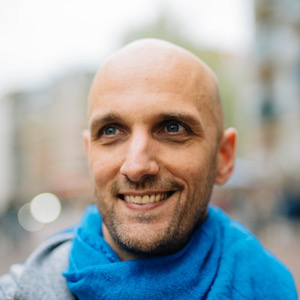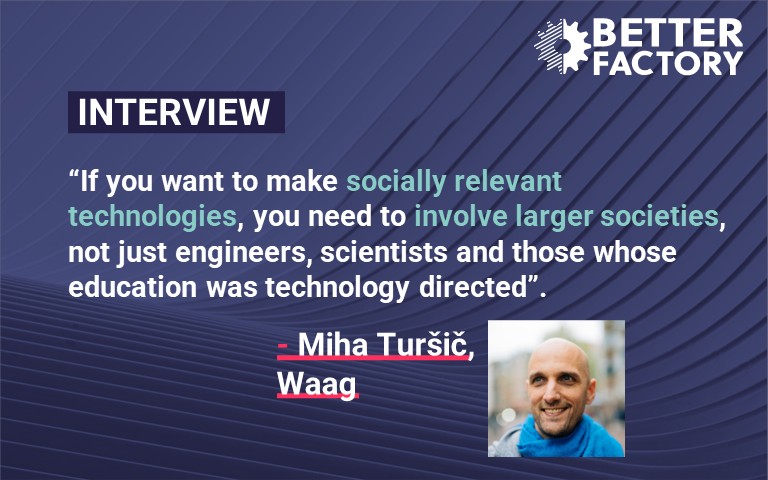Welcome to our interview series with the partners running Better Factory. Today we are lucky to be joined by one of our all-star team, Miha Turšič, to learn more about Waag and their role in the project!

Miha Turšič is an artist, designer, and researcher dedicated to developing arts and humanities in outer space. He designed works about the human condition in outer space, developing post-gravitational art and artistic satellites; founded the Cultural Centre of European Space Technologies, and is actively developing cooperations between space and art institutions. Currently, he works at Waag as an Open Space Lab lead and concept and project developer specialised in art-science collaborations.
Hello Miha, thank you for joining us today! What is your role at Waag?
My name is Miha Turšič, I am working at Waag in Amsterdam and also on the Vojext project. We are the Art partner taking care of the artistic efforts. I wouldn’t use the word ‘disrupting’, I prefer to contribute to the manufacturing sector in a different way, mainly bringing in different questions, and different perspectives that are usually not prioritized by technology partners in the industry. For example, in the case of the Vojext project, we focus on the people that work with robots, but are not involved in the process of development of robotic technologies – in other words, the workers. In this way, at Waag we prefer to see users as designers – and that’s how we identify workers, as designers or possible designers of new robotic technologies.
Could you tell us, how do you work at Waag?
Every collaboration is transdisciplinary. Experts from different domains meet and are willing to collaborate on more mutual challenges, meaning what they identify as relevant and affects all of them. In this way, we expect that collaborations with artists (not just creatives but also critical makers) changes what we previously thought about technologies being neutral – they’re actually very societal. Subsequently, if you want to make socially relevant technologies, you need to involve larger societies, not just engineers, scientists and those whose education was technology directed. You get way more inclusive technologies that are relevant for others and for citizens, at large.
Could you tell us more about Waag?
Waag is, for example, a place where we explore new ways of digital manufacturing, allowing creatives to, let’s say, come here, spend some time and try new ways of doing things. We call this public research. Let’s say if we invite engaged citizens who don’t find solutions on the market, to come here and make things by themselves – meaning that if you empower citizens or creatives with tools and conditions to create, they will make new types of technologies, and new types of products that don’t exist on the market. Or let’s take an example where the government doesn’t cater to this kind of solution. This is where Waag’s work comes in.
Waag is, as I mentioned before, a public research organization and it mainly tries to understand and contribute to the development of new technologies. In this way, we focus on the use of technologies in a public context. We developed the methodology of the public’s tech, trying to understand all the elements, all the layers, and all the processes required to develop technologies based on public values. Firstly trying to understand what are public values, which are usually mutually understood and accepted, and then building technology blocks,systems and infrastructures based on these public values.
So in this way, Waag works, let’s say with a local government, like the city of Amsterdam, with the Dutch ministries for economy, culture, environment, as well as with European actors and tries to reach all of them and share experience.
If you’d like to learn more about our partners or KTEs, just head back to the Insights section to read more interviews!

